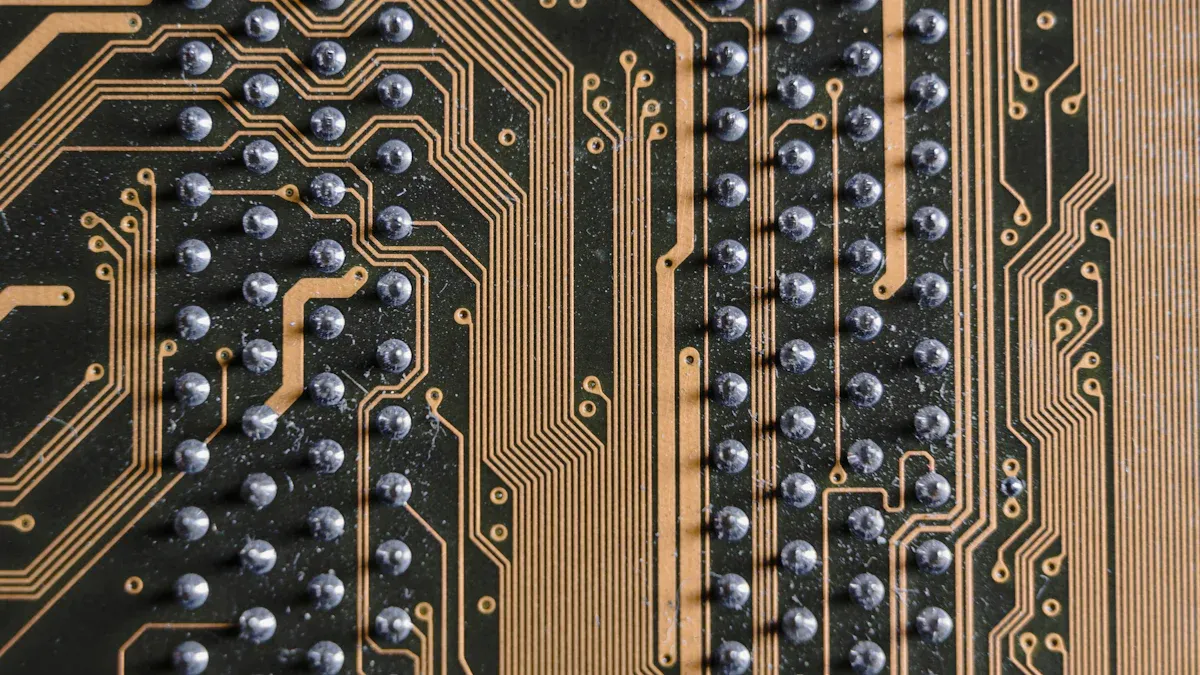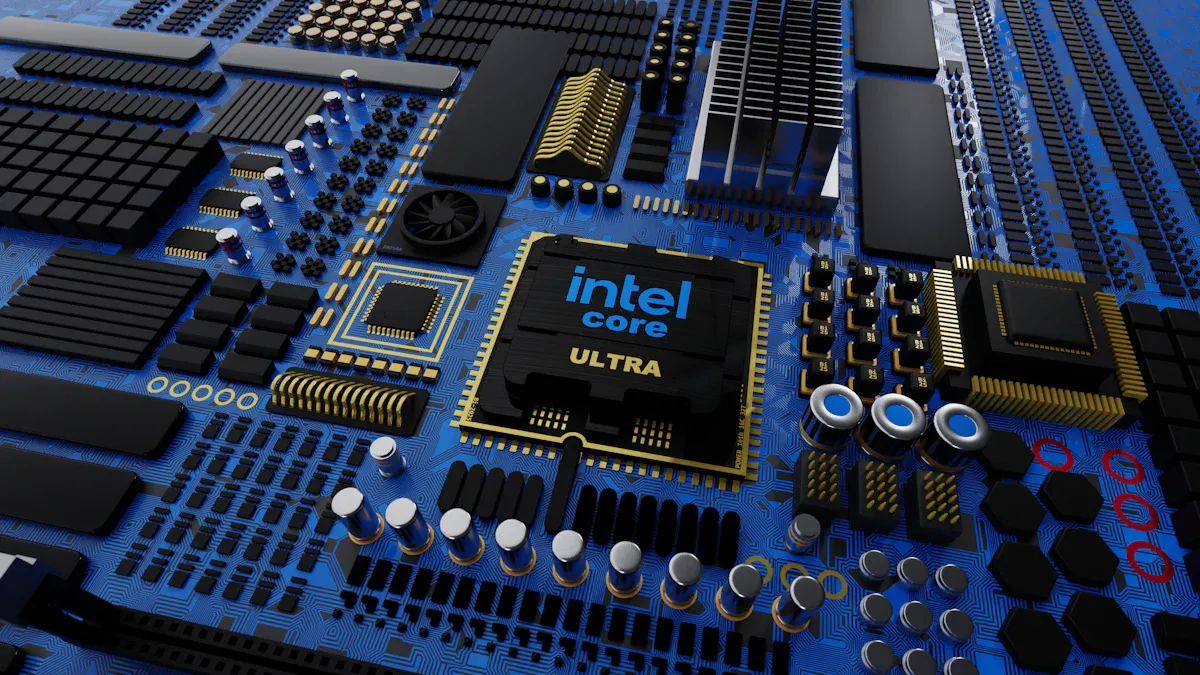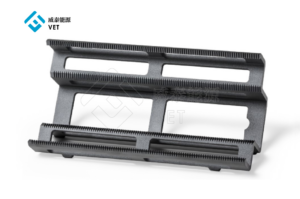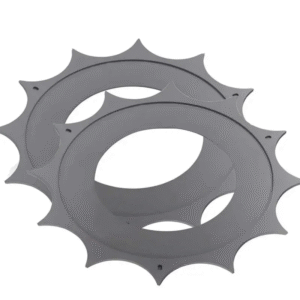
Graphite semiconductor materials deliver superior thermal management and boost device efficiency. Engineers value graphite for its high conductivity and strength. These properties help high-speed chips run cooler and last longer. Manufacturers use graphite to support advanced processes. Next-generation electronics depend on these unique material advantages.
Key Takeaways
- Graphite’s high thermal conductivity and strength help chips run cooler, faster, and last longer, making it essential for modern semiconductor devices.
- Graphite supports every stage of chip production, from wafer handling to precision equipment parts, ensuring reliable and efficient manufacturing.
- Growing demand from EVs, 5G, and AI drives innovation and sustainability efforts in graphite materials, opening new opportunities for the semiconductor industry.
Graphite Semiconductor: Essential Roles in Modern Devices

Unique Properties Driving Performance
Graphite semiconductor materials show remarkable properties that drive performance in modern electronics. Engineers rely on graphite for its high thermal conductivity, which allows heat to move away from sensitive chip areas quickly. This material also resists chemical corrosion and handles high temperatures without losing strength. These qualities make graphite a top choice for demanding semiconductor environments.
Note: Graphite’s layered structure lets electrons move easily, which helps devices run faster and more efficiently.
Manufacturers value graphite for its lightweight nature and mechanical stability. These features support the miniaturization of chips and components. As devices shrink, graphite semiconductor materials help maintain reliability and speed.
Applications in Wafer Production and Equipment
Graphite plays a vital role in wafer production and semiconductor equipment. During crystal growth, manufacturers use graphite crucibles and heaters because they withstand extreme temperatures. These tools help create pure silicon wafers, which serve as the foundation for most chips.
- Graphite boats and trays transport wafers through high-temperature processes.
- Graphite electrodes support plasma etching and chemical vapor deposition.
- Precision graphite parts appear in ion implantation and lithography equipment.
A table below highlights common uses of graphite in semiconductor manufacturing:
| Application Area | Graphite Component | Function |
|---|---|---|
| Crystal Growth | Crucibles, Heaters | Withstand high heat |
| Wafer Handling | Boats, Trays | Safe transport |
| Etching/Deposition | Electrodes, Susceptors | Enable precise processing |
| Lithography | Precision Parts | Maintain accuracy |
These applications show how graphite semiconductor materials support every stage of chip production.
Thermal Management and Device Longevity
Thermal management remains a top concern in next-generation electronics. Graphite semiconductor solutions help devices stay cool even as they become smaller and more powerful. High thermal conductivity allows heat to spread quickly, reducing the risk of overheating.
- Devices with graphite components often last longer.
- Lower operating temperatures mean less wear on sensitive parts.
- Consistent cooling helps maintain stable performance over time.
Tip: Using graphite in heat spreaders and thermal interface materials can boost device reliability and extend product life.
Engineers continue to explore new ways to use graphite for better thermal control. As a result, graphite semiconductor technology supports the push for faster, more durable electronics.
Key Innovations in Graphite Semiconductor Materials

Advances in High-Purity and Synthetic Graphite
Researchers have developed high-purity and synthetic graphite to meet the strict demands of the semiconductor industry. High-purity graphite contains very few impurities. This helps prevent contamination during chip manufacturing. Synthetic graphite offers consistent quality and can be shaped into complex forms. Companies use these materials to build parts that perform well under extreme conditions.
Note: High-purity graphite supports cleaner production environments and improves chip quality.
Impact on Device Yield and Reliability
The use of advanced graphite materials increases device yield and reliability. Fewer defects appear during production when manufacturers use pure graphite. Devices made with these materials show stable performance over time. This means fewer failures and longer product life. Many companies report higher yields after switching to improved graphite components.
A table below shows the benefits:
| Benefit | Result |
|---|---|
| Fewer impurities | Higher device yield |
| Stable performance | Greater reliability |
| Longer lifespan | Lower maintenance costs |
Isostatic and Specialty Graphite Developments
Isostatic graphite stands out for its uniform structure. Manufacturers use it to create precise parts for advanced equipment. Specialty graphite types offer unique features, such as extra strength or better heat resistance. These innovations help the graphite semiconductor industry keep up with new technology trends.
Tip: Isostatic graphite supports the production of smaller, more powerful chips.
Market Outlook and Emerging Trends for Graphite Semiconductor
Growth Driven by EVs, 5G, and AI
The demand for graphite semiconductor materials continues to rise. Electric vehicles (EVs) need advanced chips for battery management and power control. 5G networks require fast and reliable devices. Artificial intelligence (AI) systems depend on high-performance processors. These industries push manufacturers to improve graphite materials. Companies invest in research to meet the needs of these fast-growing markets.
Note: The rapid adoption of EVs and 5G technology creates new opportunities for graphite semiconductor suppliers.
Regional Market Leaders and Expansion
Asia-Pacific leads the graphite semiconductor market. China, Japan, and South Korea have strong manufacturing bases. North America and Europe also show steady growth. Many companies expand production to meet global demand. Some regions focus on building local supply chains. This helps reduce risks from international shipping delays.
A table below highlights key regions and their strengths:
| Region | Strengths |
|---|---|
| Asia-Pacific | Large-scale manufacturing |
| North America | Advanced R&D and innovation |
| Europe | Focus on quality and sustainability |
Sustainability and Environmental Initiatives
Sustainability shapes the future of graphite semiconductor production. Companies adopt cleaner processes to lower emissions. Many use recycled graphite to reduce waste. Some invest in renewable energy for their factories. These steps help protect the environment and meet new regulations.
- Cleaner production methods lower pollution.
- Recycling programs save resources.
- Renewable energy supports green manufacturing.
Tip: Sustainable practices can improve a company’s reputation and attract new customers.
Industry Impact: Leading Companies and Strategic Investments
Major Players in the Graphite Semiconductor Market
Several companies lead the way in graphite materials for semiconductors. Tokai Carbon, SGL Carbon, and Toyo Tanso have built strong reputations for quality and innovation. These companies supply high-purity graphite parts to chipmakers worldwide. They invest in advanced manufacturing to meet strict industry standards. Many customers trust these brands for reliable products and technical support.
Regional Hotspots and Supply Chain Dynamics
Asia-Pacific stands out as the main region for graphite production and semiconductor manufacturing. China, Japan, and South Korea operate large factories and research centers. North America and Europe focus on specialty products and advanced research. Supply chain stability remains important. Companies work to secure raw materials and reduce shipping risks. Local partnerships help keep production on schedule.
Note: Regional hubs often attract new investments and skilled workers, which helps the industry grow faster.
R&D and Collaborative Innovation
Research and development drive progress in the graphite semiconductor field. Companies team up with universities and research labs to create better materials. They test new production methods and improve product performance. Many firms join industry groups to share knowledge and set standards. These efforts lead to faster innovation and stronger global competition.
Challenges and Future Directions for Graphite Semiconductor
Supply Chain and Raw Material Constraints
Manufacturers face ongoing challenges in securing high-quality graphite. Many rely on a few countries for raw materials. This dependence can lead to supply disruptions. Price changes often affect production costs. Some companies struggle to find enough pure graphite for advanced chips. They must also compete with other industries for the same resources.
Note: Diversifying suppliers and investing in local sources can help reduce risks.
Environmental and Regulatory Challenges
Environmental rules continue to shape the industry. Mining graphite can impact land and water. Governments set strict limits on emissions and waste. Companies must follow these rules to keep their licenses. Some regions require special permits for mining and processing. Meeting these standards often increases costs.
A table below shows common environmental concerns:
| Challenge | Impact on Industry |
|---|---|
| Water pollution | Higher treatment costs |
| Land disruption | Stricter regulations |
| Air emissions | Need for cleaner tech |
Industry Responses and Opportunities Ahead
Industry leaders respond with new strategies. Many invest in recycling programs to reuse graphite. Others develop cleaner mining methods. Some companies work with local communities to protect the environment. Research teams look for alternative materials and better processing techniques.
- Recycling reduces waste and saves money.
- Cleaner technology meets new regulations.
- Partnerships support sustainable growth.
Tip: Companies that focus on innovation and sustainability can gain a competitive edge in the future.
Graphite’s unique properties continue to shape the future of semiconductor technology. Ongoing innovations and strong investments drive progress in this field. Companies that address supply, sustainability, and regulatory challenges will unlock new opportunities. The industry stands ready for growth as demand for advanced electronics increases.
FAQ
What makes graphite important for semiconductor manufacturing?
Graphite provides high thermal conductivity and chemical stability. These properties help protect sensitive chips and improve production efficiency.
Can recycled graphite be used in semiconductor applications?
Yes. Many companies use recycled graphite to reduce waste and lower costs. Recycled graphite often meets strict industry standards.
How does graphite improve device reliability?
Graphite spreads heat quickly. This action prevents overheating and reduces stress on electronic components. Devices last longer and perform better.






